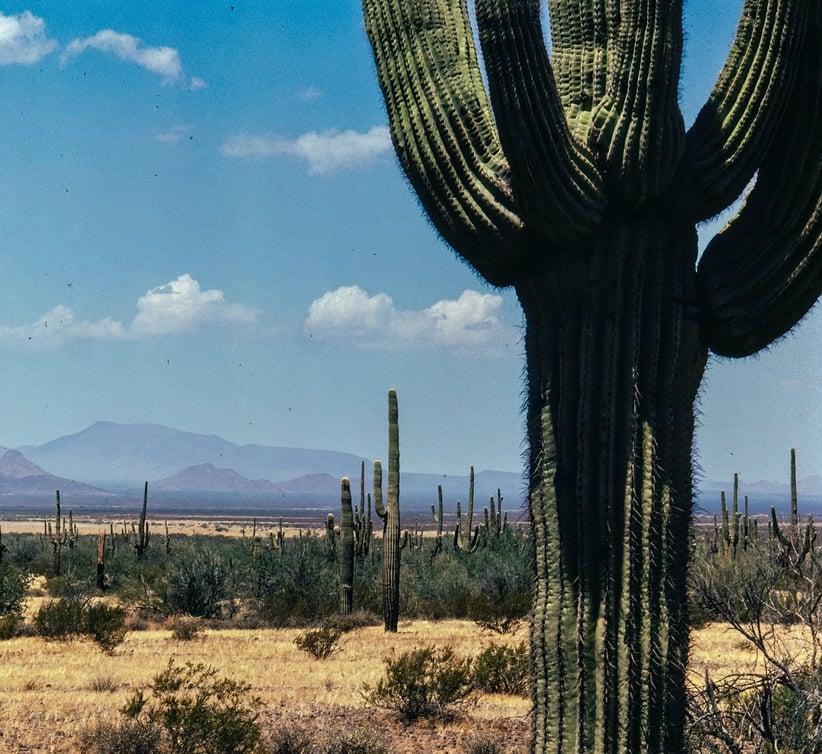The First 1,000 Miles
In late August 1973, my old, beat-up ’68 Chevy Impala and I embarked on a journey to the Sonoran Desert. I was completely unaware of what awaited me.
However, my naivety proved a blessing.
Remember those days before the ‘80s? Back then, we didn’t have the luxury of GPS navigation systems. GPS technology was still in its infancy in 1973 and was exclusively owned by the U.S. Department of Defense. We were left with the “stone-age” technology of paper maps. At our local gas station in west Denver, I picked up a map of the Southwest United States. I drew straight lines connecting our home to Santa Rosa Village, my future home.
But guess what? Santa Rosa Village wasn’t on that map or any other map I consulted at the Denver Public Library. Frustrated, I made a much-delayed call to the Bureau of Indian Affairs–Phoenix. Following instructions, I drew a few more straight lines, aiming for Casa Grande, Arizona.
Casa Grande was just a tiny speck on my map, about 30 miles from my intended destination, Santa Rosa Village. I was to drive south on I-25 for 450 miles to Albuquerque, New Mexico. Another 60 miles would bring me to Socorro, where I would spend a night at a “reasonably priced” motel.
The following morning began with a grueling uphill climb out of Socorro on the two-lane US-60 highway, heading always west. After a few hours, the high desert of central New Mexico gradually transformed into an alpine landscape of Pine Top and Show Low, Arizona. After crossing the Salt River Canyon, I started my descent into the “Valley of the Sun” (Phoenix). An hour later, I found myself alongside an open-pit copper mine in Globe, Arizona.
As I continued to lose elevation, signs declaring the fabled Superstition Mountains—renowned for the legend of the “Lost Dutchman Gold Mine”—adorned the right shoulder of US-60. Finally, after an eternity, I arrived in the scorching August afternoon inferno, the Sonoran Desert.
The longest 90 minutes of my then 25 years followed.
My Impala’s air conditioning…well…it never worked! I never blamed my trusty chariot! I could afford its purchase price because of the faulty AC system. Living and working in Colorado, I never imagined I needed air conditioning in a car. And, if I ever needed to be “cooled,” I would activate the “4/70 System,” that is, “4 windows rolled down while driving at 70 (110 km) miles an hour.”
It was the ‘70s. What was later to become the 8-lane Superstition Highway was nonexistent. Instead, a 4-lane US-60, appropriately named “Main Street,” meandered through the heart of Mesa, Arizona. Dotted with traffic lights every few feet—all red!— I spent hours frying in 100+ degree (40°C) heat as I slowly traversed the Mesa-Phoenix sprawl. No possibility for the “4/70 System” here! Intermittent glances into my rearview mirror revealed an alarmingly red face staring back at me. I was literally frying—boiling?—in the desert heat.
We—my Impala and I— eventually reached I-10 / I-17. Jamming the pedal to the floorboard, we abruptly accelerated towards Casa Grande. Unfortunately, as all the windows were open, a blast of hot air from a furnace slapped me out of my malaise. It became evident that my “improvised” air conditioner from Colorado would not suffice in southern Arizona.
Scorched by the late summer sun, a monotonous, brown, barren desert landscape accompanied our road south. The bland landscape made me sleepy; that is until…
Ahead of me, on the left side of the road, a small mountain materialized from the dusty haze. The mountain—a small hill by Colorado standards—woke me from my lethargy. It was not the size of the mountain that caught my attention. Instead, what covered its rocky slope became my focus. From the midst of dull brown and grey poked sizable clumps of green. Green!
My Impala abruptly slowed, to the dismay of the following traffic. On that day, I had my first glimpse of that Sonoran Desert icon. The mighty saguaro cactus was angling towards a cloudless blue sky, jutting from hard desert soil, surrounded by sparse, hardy green vegetation.
Fascinated by the sight, I could not fathom that wondrous view would become a regular part of my life for the next four years. Even today, as I descend into the desert during my frequent trips to southern Arizona, my breath catches in my throat, and goosebumps cover my arms and legs when I catch sight of the first saguaro cactus. That “icon of the Sonoran Desert” even now releases a floodgate of memories, memories I shall never, ever relinquish.


